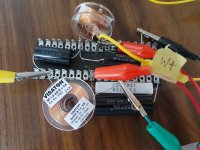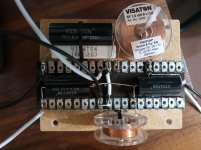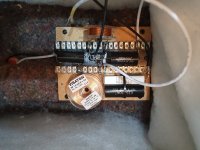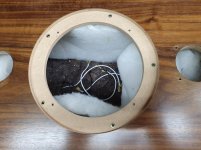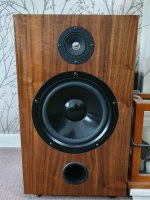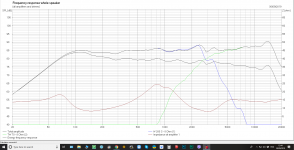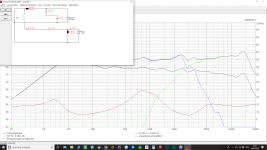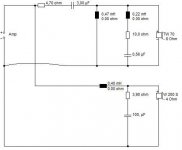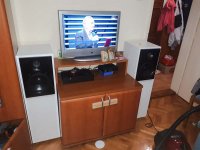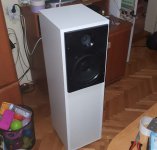I seem to recall that Basildon, Essex is the most typical English Constituency. Whatever Basildon thinks is what the Country thinks.
Totally agree with youAll deeply confusing. We just retire to good music played on decent speakers.
So this Seas Woofer is better option than W 200 S with the same crossover?
You really don't know till you try it.
This is a bit of a classic three-way: SEAS-3-Way-Classic
Everything about a 3-way is better than two-way IMO. Goes loud without distortion. The small mid has better dispersion.
Troels Gravesen worried about bass cone breakup in his 3-way. For sure, a polycone has less breakup than a paper cone.
Seas P21RE/P H0942-08 Woofer. H0313 2015 remake
3-ways have an unexciting sound. Perhaps because they have less distortion than a 2-way. They sound quiet, which encourages you to turn them up loud...
I really don't think choice of bass drivers is all that important in a 3-way. Everything is in it's comfort zone and works well.
This is a bit of a classic three-way: SEAS-3-Way-Classic
Everything about a 3-way is better than two-way IMO. Goes loud without distortion. The small mid has better dispersion.
Troels Gravesen worried about bass cone breakup in his 3-way. For sure, a polycone has less breakup than a paper cone.
Seas P21RE/P H0942-08 Woofer. H0313 2015 remake
3-ways have an unexciting sound. Perhaps because they have less distortion than a 2-way. They sound quiet, which encourages you to turn them up loud...
I really don't think choice of bass drivers is all that important in a 3-way. Everything is in it's comfort zone and works well.
I guess I have to try them, and I will. 3 way speakers will be another projectYou really don't know till you try
 I will update soon
I will update soon
I suppose that with prior planning, we could build a decent two-way and later convert to a three-way. 
Such is the old SEAS kit Njord:
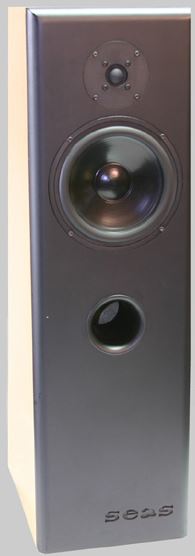
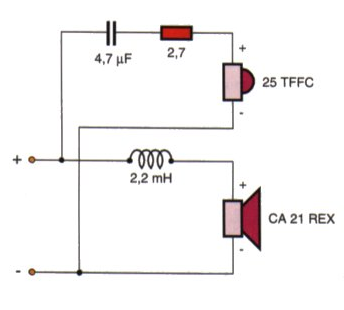
IMO, not the greatest design ever, but probably does a few good things. Modern drivers are probably the bass SEAS CA22RNX and a 27TFFC tweeter.
Later add a mid and a decent crossover. Voila, SEAS-3-Way-Classic
Remember the 6 P's. Prior planning prevents "**** Pauvre" performance.
Such is the old SEAS kit Njord:
IMO, not the greatest design ever, but probably does a few good things. Modern drivers are probably the bass SEAS CA22RNX and a 27TFFC tweeter.
Later add a mid and a decent crossover. Voila, SEAS-3-Way-Classic
Remember the 6 P's. Prior planning prevents "**** Pauvre" performance.
Mission completed.They sound beautiful....at least to me Thanks a lot for the help Steve
Thanks a lot for the help Steve

Attachments
Last edited:
Congratulations, that is a buatifully looking veneered cabinet. I suppose you are fine with it although could be worth a try to modify the 1.5 mH inductor (0.6mm wire=1.9 Rdc) with a 1 mm wire version. According to Visaton, difference in Rdc between the two is 1.3R.
edit: How is the final circuit now?
edit: How is the final circuit now?
Congratulations, that is a buatifully looking veneered cabinet. I suppose you are fine with it although could be worth a try to modify the 1.5 mH inductor (0.6mm wire=1.9 Rdc) with a 1 mm wire version. According to Visaton, difference in Rdc between the two is 1.3R.
edit: How is the final circuit now?
Yeah, as I said before I'm totally new in this. I didn't realise there is a different thickness wire. I guess less resistance is better in this case? Is it going to be noticeable if I do the change?
ThanksVery nicely done! I'm sure it sounds fantastic.
Is it going to be noticeable if I do the change?
I'm going to take a crack at this.
With the 0.6 mm inductor:
Power going to the driver is down 1.6 dB. You won't hear this, but it means that a lot more power is dissipated by the inductor. For an average power of 15 W into the speaker, 4.8 W is dissipated in the inductor.
With the 1 mm inductor:
Power going to the driver is down 0.6 dB. The power dissipated in the inductor is a much smaller percentage of the power going to the speaker. For an average input of 15 W, only 1.9 W is dissipated in the inductor.
Furthermore, you will be able to drive more power into the speaker with the 1 mm inductor (I think by about 22 %).
As far as sensitivity is concerned, sensitivity is 2.2 dB less with the 0.6 mm inductor. Using the theoretical 88 dB for the driver at 1 W, at 2.83 V, the sensitivity is as follows:
0.6 mm: 87.6 dB
1 mm: 89.8 dB
You will need to adjust the tweeter accordingly, but again, with the 1 mm inductor, you will use a smaller value resistor on the tweeter and therefore dissipate less power in that.
I hope I'm accurate...
I think I should just add that I don't think it matters at all. 15 W average power is something massive, probably in the region of 200 W peak power. According to this thread it looks like most people are happy with an average of only a few watts.
Is it going to be noticeable if I do the change?
Thanks
It should be an obvious improvement for the better. Perhaps you can source magnet wire somewhere cheaply and build the inductors yourself. Would be a great exercise though.
I'm going to take a crack at this.
With the 0.6 mm inductor:
Power going to the driver is down 1.6 dB. You won't hear this, but it means that a lot more power is dissipated by the inductor. For an average power of 15 W into the speaker, 4.8 W is dissipated in the inductor.
With the 1 mm inductor:
Power going to the driver is down 0.6 dB. The power dissipated in the inductor is a much smaller percentage of the power going to the speaker. For an average input of 15 W, only 1.9 W is dissipated in the inductor.
Furthermore, you will be able to drive more power into the speaker with the 1 mm inductor (I think by about 22 %).
As far as sensitivity is concerned, sensitivity is 2.2 dB less with the 0.6 mm inductor. Using the theoretical 88 dB for the driver at 1 W, at 2.83 V, the sensitivity is as follows:
0.6 mm: 87.6 dB
1 mm: 89.8 dB
You will need to adjust the tweeter accordingly, but again, with the 1 mm inductor, you will use a smaller value resistor on the tweeter and therefore dissipate less power in that.
I hope I'm accurate...
I think I should just add that I don't think it matters at all. 15 W average power is something massive, probably in the region of 200 W peak power. According to this thread it looks like most people are happy with an average of only a few watts.
It should be an obvious improvement for the better. Perhaps you can source magnet wire somewhere cheaply and build the inductors yourself. Would be a great exercise though.
Thanks a lot for the info guys! To be honest I didn't expect much when I start building them,but they they turn out good at least the cabinets.And with some corrections they sound good as well.Probably I will change the inductors and see if I can hear the difference
edit: How is the final circuit now?
Sorry I did't saw your question earlier. I was using the optimisation in Boxsim.
Attachments
Mine version of this combo, a bit different approach, woofer is 4 ohm
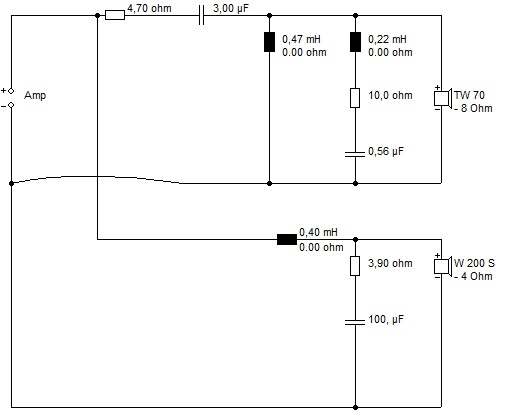
60 liters cab, detachable front (in case I change my mind and build something else )
)
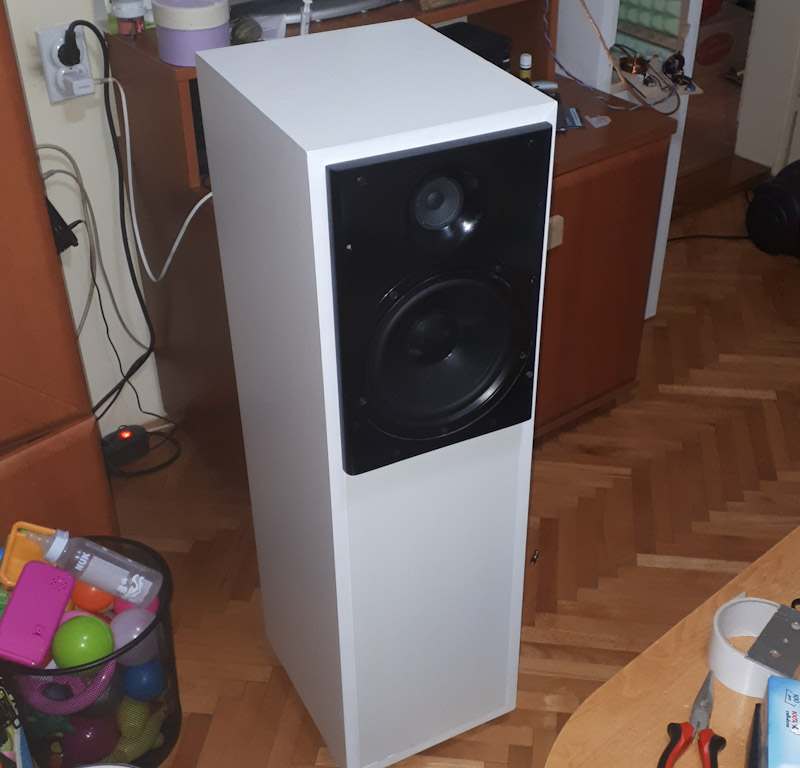
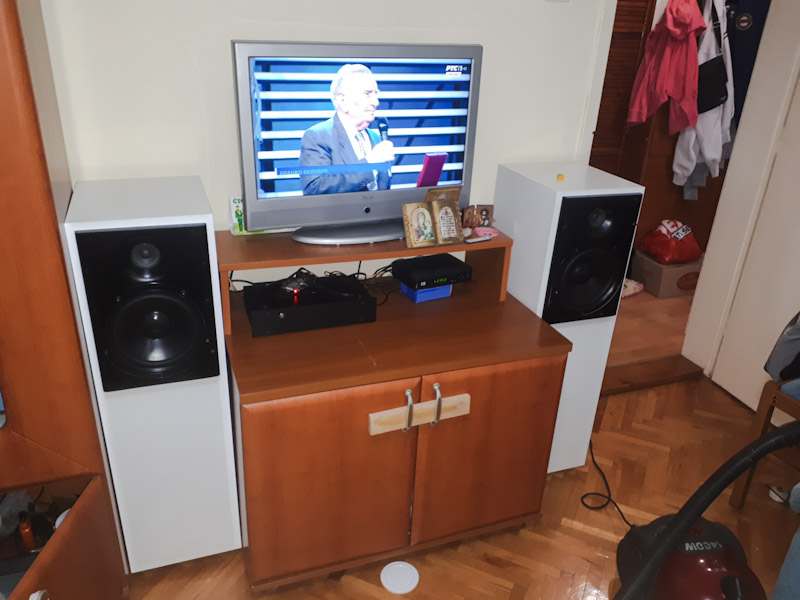
More info here: Visaton W by VladaC (aka WLM La Scala) aka Alex edition, a posle i možda nešto drugo - Project gallery/WIKI - diyAudio.rs

60 liters cab, detachable front (in case I change my mind and build something else
More info here: Visaton W by VladaC (aka WLM La Scala) aka Alex edition, a posle i možda nešto drugo - Project gallery/WIKI - diyAudio.rs

Attachments
Great work, acamilicko! 
When I first saw the WLM La Scala, I just wondered how those guys were charging 3,000 Euros for something with a ten buck tweeter!
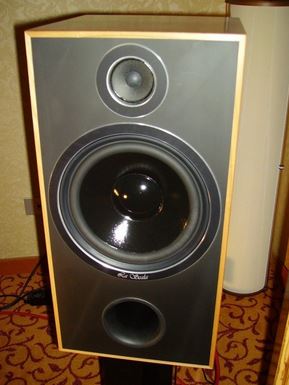
Actually, they reminded me of my first serious £35 speakers back in 1972, the Wharfedale Linton II's:
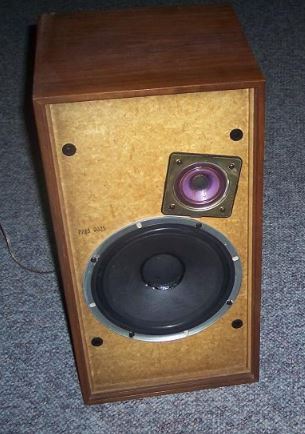
I have tried the Visaton TW70 and the similar Monacor HT-22 tweeters. TBH, I prefer the Monacor:
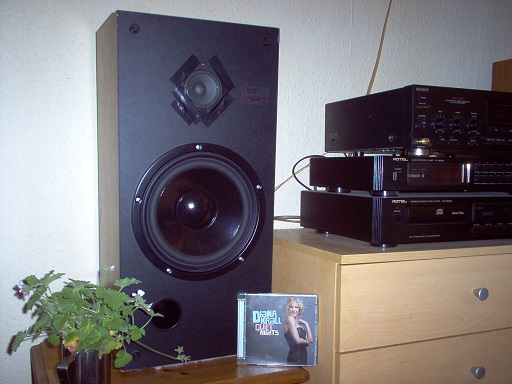
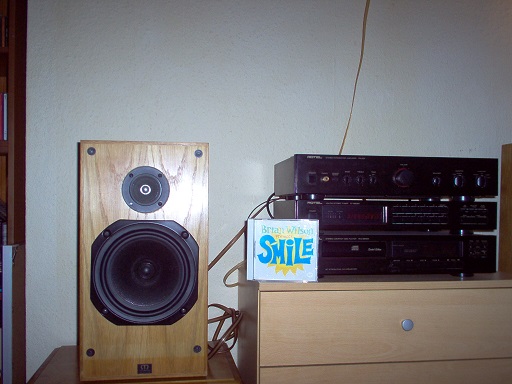
I haven't taken the Monacor apart, but I suspect it doesn't have a spider, The Visaton tweeter does. I only know this because I put a screwdriver through the Visaton tweeter cone one day, by accident!
When I first saw the WLM La Scala, I just wondered how those guys were charging 3,000 Euros for something with a ten buck tweeter!
Actually, they reminded me of my first serious £35 speakers back in 1972, the Wharfedale Linton II's:
I have tried the Visaton TW70 and the similar Monacor HT-22 tweeters. TBH, I prefer the Monacor:
I haven't taken the Monacor apart, but I suspect it doesn't have a spider, The Visaton tweeter does. I only know this because I put a screwdriver through the Visaton tweeter cone one day, by accident!
Last edited:
- Status
- This old topic is closed. If you want to reopen this topic, contact a moderator using the "Report Post" button.
- Home
- Loudspeakers
- Multi-Way
- Visaton W200S + TW70
